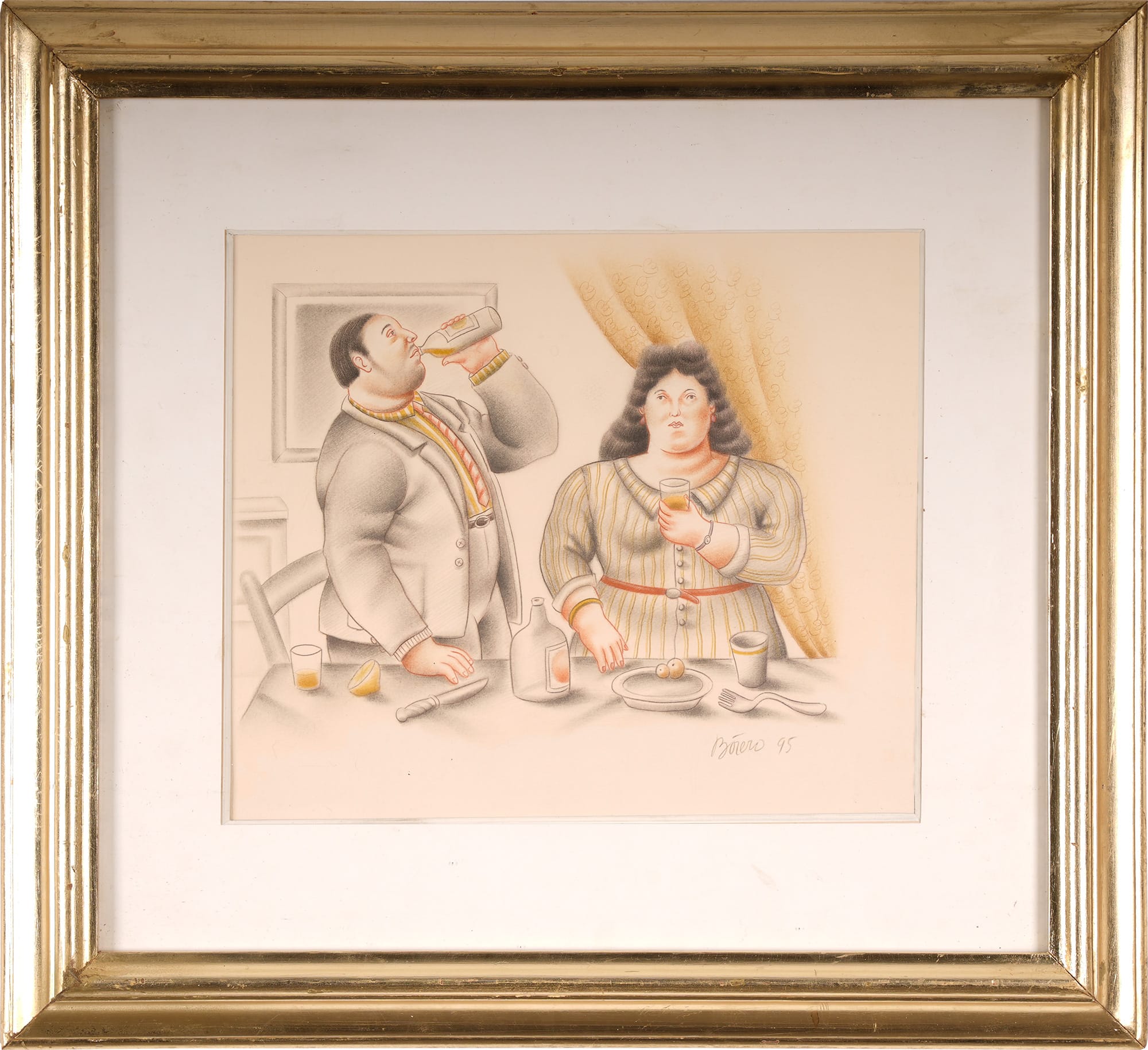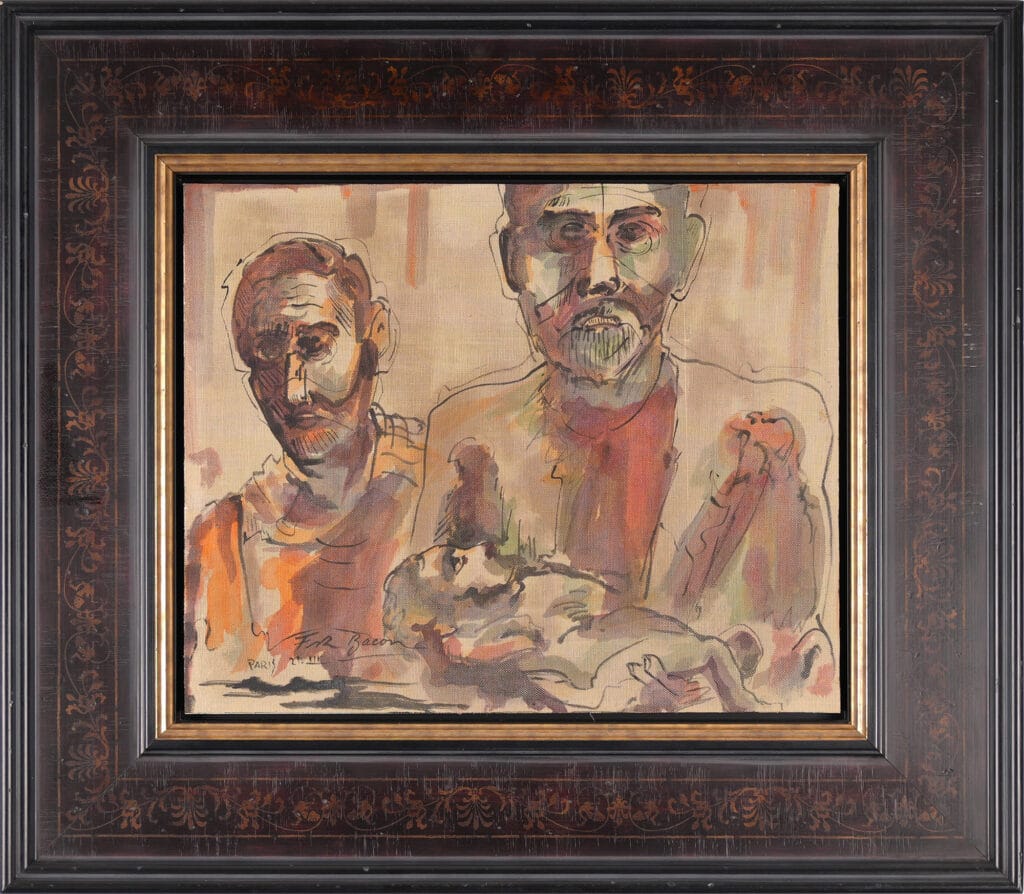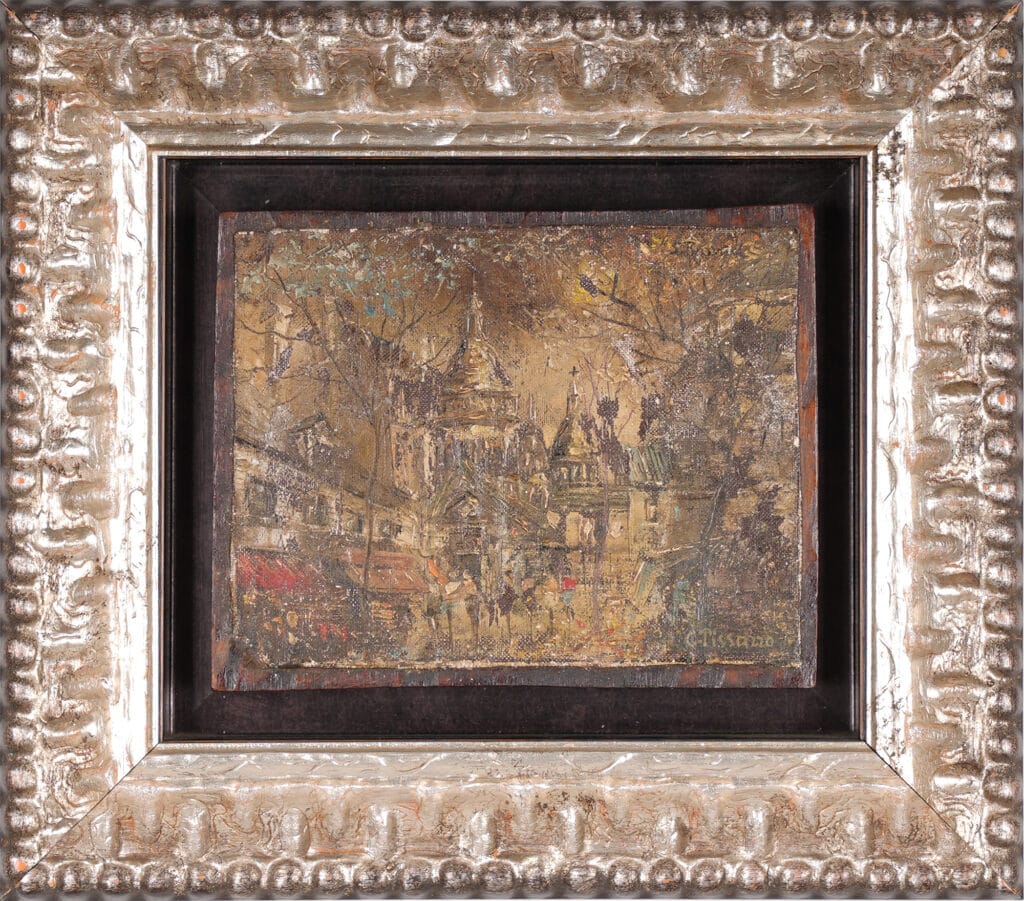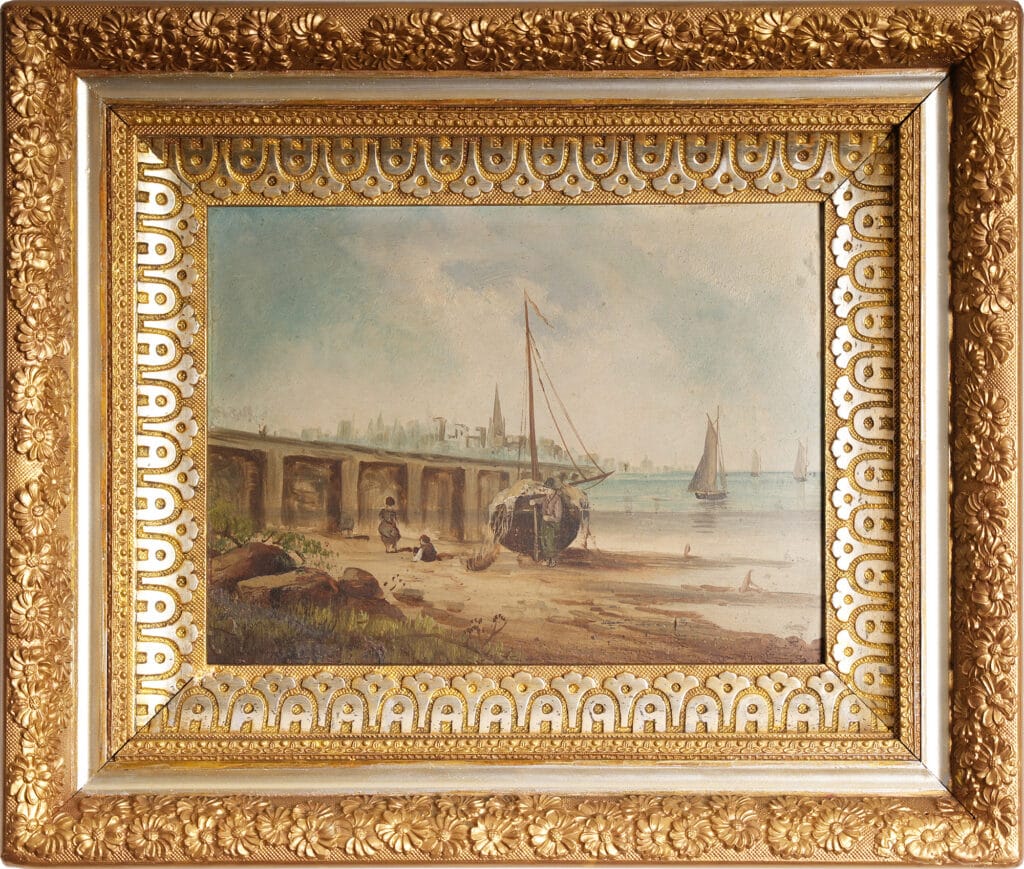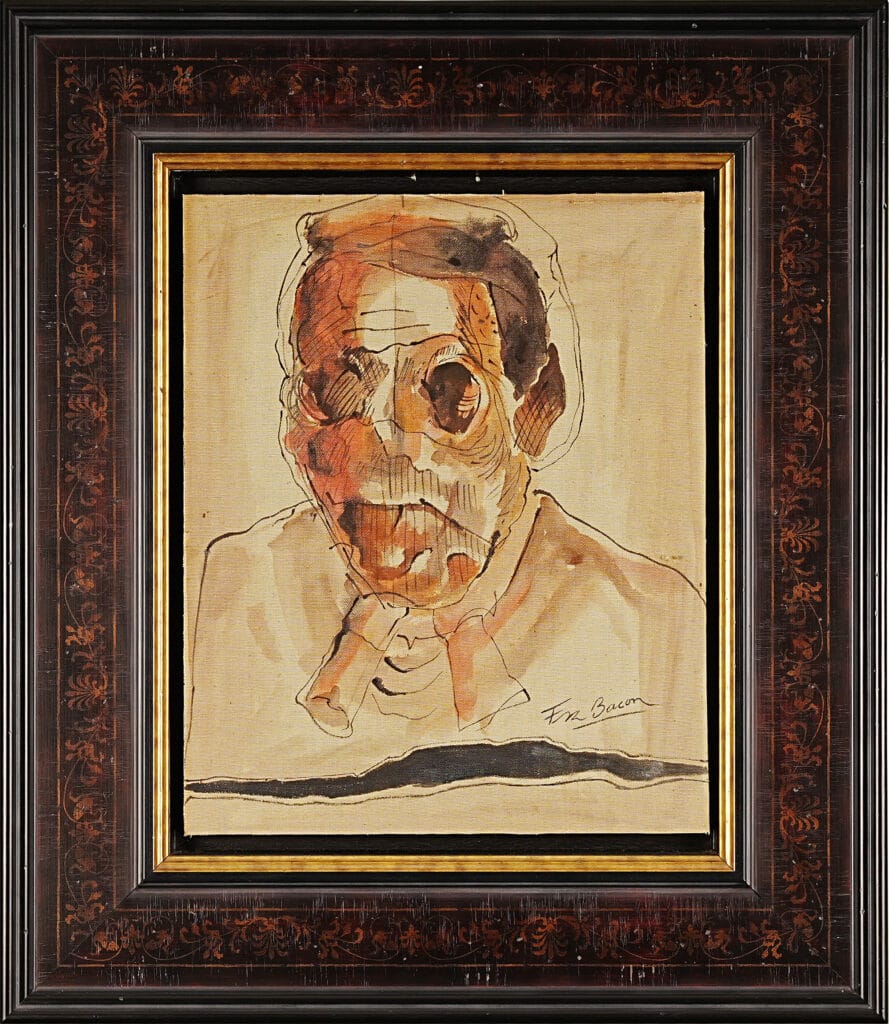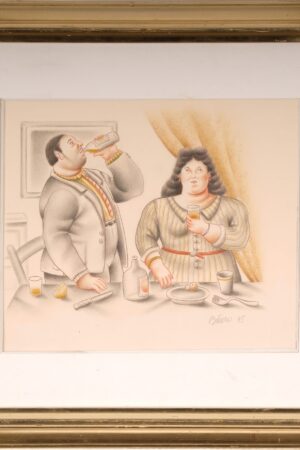Description
Attributed to Fernando Botero, this artwork portrays a humorous and satirical scene of a voluptuous couple enjoying a lavish meal. The exaggerated figures embody both opulence and irony, characteristic of Botero’s signature style. Executed in rich pastel tones, the medium enhances the rounded forms and vibrant colors, infusing the scene with warmth and vitality. At once playful and reflective, the piece offers a subtle critique of excess and indulgence, making it a quintessential example of Botero’s satirical aesthetic.
Fernando Botero, born in Medellín, Colombia, was one of the most distinctive and influential Latin American artists of the 20th and 21st centuries. From an early age, he showed a keen interest in art, inspired by the baroque paintings and colonial churches of his hometown. He began formal studies in Bogotá and later traveled to Europe, where he studied the works of Renaissance masters such as Piero della Francesca and Diego Velázquez. This classical training deeply influenced his sense of composition, balance, and the use of rich, vibrant colors that characterized his career.
Emergence of Boterismo
Botero’s signature style, known as “Boterismo,” emerged in the 1950s. He began experimenting with volume and proportion, creating figures and objects that were exaggerated, rounded, monumental, yet dignified. His paintings often depicted everyday Latin American life, from busy streets to intimate portraits, blending warmth with subtle social satire.
Social and Political Commentary
Beyond humor, Botero’s work frequently carried political and social messages, addressing issues such as violence, corruption, and injustice. His notable series, The Abu Ghraib Paintings, depicted human rights abuses at the U.S.-run prison in Iraq, showcasing his ability to confront serious topics through his distinctive visual language.
Sculpture
Sculpture became a central part of Botero’s artistic expression. His voluminous figures gained even greater presence in three-dimensional form, including animals, reclining figures, and musicians. Major cities worldwide—from Medellín to Paris and New York—display his sculptures in public spaces. Works like The Fat Cat and The Horse highlight his mastery of form, humor, and grandeur.
Connection to Latin America
Despite international fame, Botero remained deeply connected to his Latin American roots. He donated numerous works to museums in Colombia and enriched public spaces in Medellín with sculptures and paintings, ensuring that his cultural heritage remained visible and celebrated.
Later Years and Legacy
In his later years, Botero continued exploring diverse themes, from still lifes to religious subjects, while maintaining his unmistakable style. By redefining form, volume, and artistic expression, he created a visual language that is both fantastical and deeply rooted in reality. His work blends humor, social critique, and aesthetic beauty, making it timeless, universally admired, and instantly recognizable.


